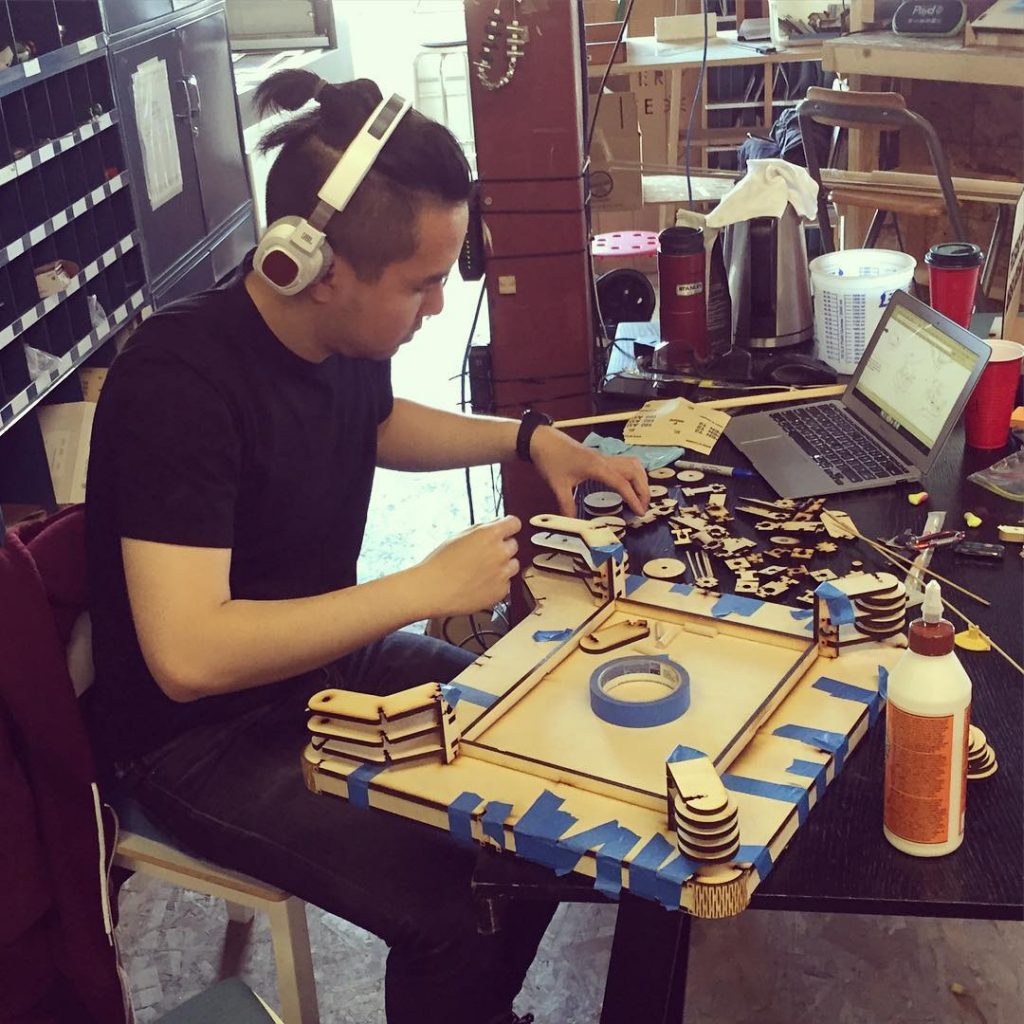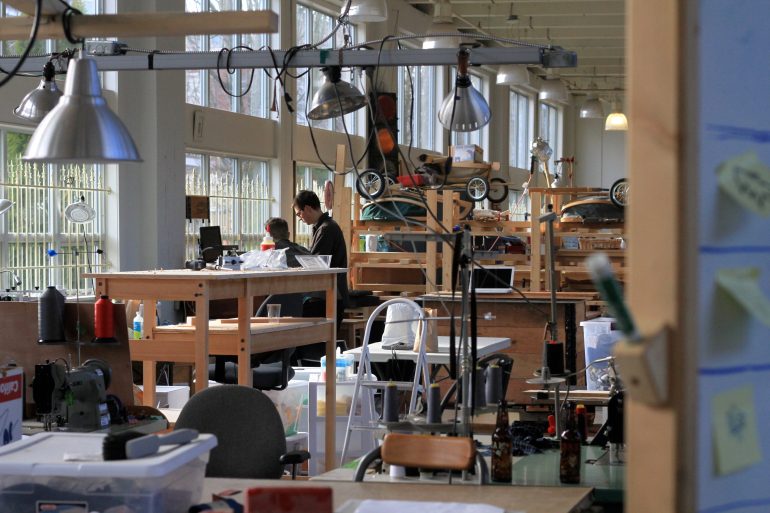When we last looked at MakerLabs, a space that helped bring the Bay area’s maker culture to Vancouver, they were already growing fast, from 3,000 square feet to 12,000. Now they’re in a 26,000 square foot warehouse in historic Strathcona, on the edge of the downtown core (just a short walk from their original Chinatown popup store, the Laser Cutter Café, where co-founder Derek Gaw realized six weeks in that they were really on to something).
These days, 200 members work out of the space, where they can delve into just about anything. Some focus on traditional woodworking and metalworking. Others are using 3D printers, laser cutters and CNC routers to build robots, like the robotic bartender that served up precision-poured negroni drinks at the Science of Cocktails event earlier this month.
Clearly, the local tech community is not just limited to coders creating virtual worlds. This is as hands-on as it gets.
“Computers make this way more accessible to people than ever before,” Gaw says, explaining the rise of maker culture here. “There are things you can do with CNC routers and laser cutters that would literally be a decade of skill short-circuited into an hour of robot time, producing results that are repeatable, so you can do that once and then do something else.
The robotic mixologist makes a stiff negroni. Come see it and other MakerLabs projects at @scienceworldca #scienceo… pic.twitter.com/D4elSrMOKm
— MakerLabs (@MakerLabsVan) January 18, 2017
“In the previous model of making stuff on your own, everything was manual and hand-done. In that way of doing things, you make a living by how long it takes you to do it, or your skill level. Now, with the robots doing it, you can actually make a living without it affecting your time and health too much. You can even build businesses and support your own lifestyle using maker tools.”
Some subset of our growing population of technophiles has always loved tinkering on projects in their garage, workshed or basement (Though in urban Vancouver, fewer folks can afford such private workshop areas, perhaps generating demand for community spaces). The so-called maker subculture, building on hacker spaces and workshops, seemed to gather steam (and a name for itself) right around the time that 3D printing started being a thing.
Vancouver was a bit late to the game when MakerLabs was first testing out demand in 2013. (After first becoming aware of maker culture while working in the tech industry in Seattle and San Franciso, Gaw returned to find no viable maker spaces around). Today, the community here seems to be reaching a kind of critical mass – though with growth, comes change.

MakerLabs as a startup lab
Maker spaces are probably more associated with passionate hobbyists and arts and crafters than professional entrepreneurs. Today, there’s a crossover.
It’s not uncommon for small startups to be found working in the space. For instance, Gift-a-Green sells greeting cards that literally come alive; it’s ‘chia pet in a postcard’ style of product is produced right in the MakerLabs space before getting shipped across the city. Portable Electric’s clean, renewable batteries that can be used to replace diesel generators, got their start in the space as well (before outgrowing it). Meanwhile, MakerLabs also plays host to the likes of the Capilano University Textile Arts department and the Open Science Network, Vancouver’s first community science lab.
With augmented reality and wearables, we’re definitely moving to the Tony Stark future.
The startups and professional organizations fill out the space that isn’t taken by individual members, though they aren’t the only ones experimenting with new tech and business ideas. Gaw explains that they’re working on processes to open up MakerLabs as a kind of custom fabrication hub for custom goods. They’re already creating custom products using digital tools for paying clients.
“The way we scale up from here will be mostly online,” Gaw says. “We offer a full-service application, with people asking us to make this or that, though the process is a bit cumbersome. It almost always comes from cold emails. Coming from Amazon, I know the value of having no human touch points until absolutely necessary. That’s why I’m trying to automate as much as possible and have that shipped back out to them. We would never compete with Amazon for commodity goods, but a lot of people request custom goods. We’ve barely scratched the surface on that.”
Making new stuff in new ways, as the tech gets techier
Though maker culture seems to be stronger here than ever, there’s still a lingering sense as an outside observer that it’s been a bit in decline, at least in terms of pop culture mentions. Gaw explains that the culture is still very much alive as it incorporates new technologies.
“A lot of people combine their impression of maker culture with the rise of 3D printing technology,” Gaw says. “About three years ago, 3D printers were almost the be-all, end-all of maker tech. That spiked in 2015. But there has been a big letdown in terms of what people expected from 3D printing and it has been commodified. The hype has died down. Now people recognize 3D printers are another tool, not the be-all, end-all.”
Indeed, Gaw emphasizes that many of the longtime members of MakerLabs are still happily confining their maker projects to traditional woodworking or metalworking tools that don’t require computers or batteries.
Our star fabricator Tina jointing the top sections for a custom walnut dining table #make pic.twitter.com/89kIAWghV1
— MakerLabs (@MakerLabsVan) January 17, 2017
That said, VR and AR are some of the tech trends that cutting-edge makers are experimenting with now. There’s a lot of exploration in low production value devices – and MakerLabs has several VR headsets to help makers digitize 3D objects.
The real rise of maker culture is just starting. “Access to tools is only improving,” Gaw says. “The capabilities of laser cutters, by far our most popular tools, are getting more powerful and able to cut through more materials. We’re also going to see the rise of robot arms. Traditionally, these machines look like giant printers that move along an axis. But if you’ve seen car-making robots that do many different things, it’s going to be like that. This year, we’re going to see more of these tools being used in maker spaces.”
The technology isn’t just changing the tools, but how we use them. “Right now, there’s the computerized entryway of doing it,” Gaw says. “Then there’s the interactive teaching methods where you learn to reach something towards where it needs to go. With augmented reality and wearables, we’re definitely moving to the Tony Stark future.”


